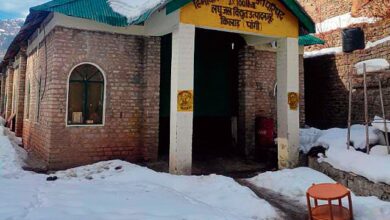Two tunnels on the Pathankot-Mandi route are finished
The first phase of the Pathankot-Mandi four-lane project at Kotla has seen the National Highways Authority of India (NHAI) complete the building of two double-lane tunnels, marking a significant milestone. Built between towering mountains, these two tunnels connect Trilokpur and Kotala.

According to NHAI Project Director Vikas Surjewala, the first tunnel, about 700 meters in length, would avoid Kotla town, while the second tunnel would avoid the Hanuman section of the former route, which was vulnerable to significant landslides during the monsoon. He called it a tremendous accomplishment of the NHAI and expressed optimism that one of the key projects, which connects Pathankot with Leh and other advanced locations, would be completed soon.
He claimed that the construction of both tunnels was given to the Gabber Construction Company, situated in Gurugram. The business completed the tunnel project really well, much ahead of schedule. With the cost of the tunnels included, the anticipated total cost of this phase is Rs 523 crore.
He said that the concreting and finishing work were ongoing. The length of the roadway in this section has been shortened by nine kilometers with the building of both tunnels.
One of the government of India’s major road projects is the 219-kilometer Pathankot-Mandi route, which connects Pathankot with Leh, Ladakh, and other forward-thinking regions. The Center intends to finish it as soon as possible in order to comply with defense standards.
According to Surjewala, the DPR created by the private firm Joint Ventures and Infrastructure Casta Limited in 2016 will not change for the first 154 km of the highway and will only be modified for the final 65 km in the Mandi district to avoid cutting hills because the region has challenging topography with tall mountains. The NHAI had placed particular emphasis on minimizing the number of hills that were cut, preventing discomfort for those who lived near the route, and preventing the relocation of commercial buildings.







